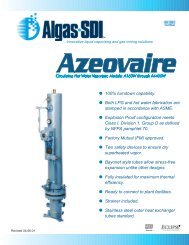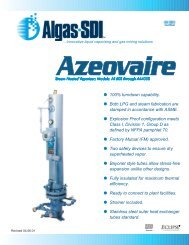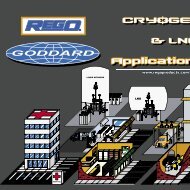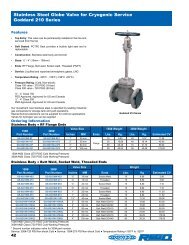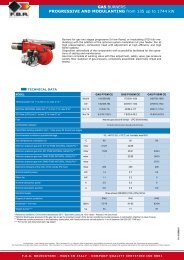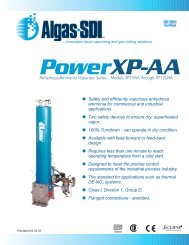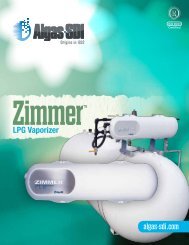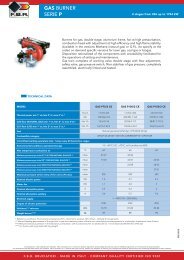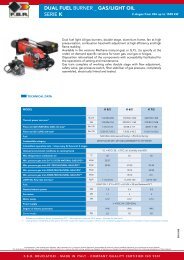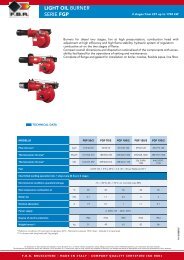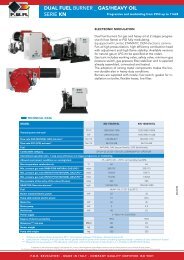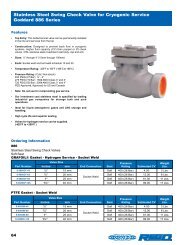LP-Gas Serviceman’s Manual
LP-Gas Serviceman's Manual - cecogas
LP-Gas Serviceman's Manual - cecogas
- No tags were found...
Create successful ePaper yourself
Turn your PDF publications into a flip-book with our unique Google optimized e-Paper software.
<strong>LP</strong>-<strong>Gas</strong> Regulators<br />
5. Find the line on the chart corresponding to the anticipated inlet<br />
pressure.<br />
6. Draw a vertical line upward from the point of assumed load<br />
(250,000 BTUs per hour) to intersect with the line corresponding<br />
to the lowest inlet pressure.<br />
7. Read horizontally from the intersection of these lines to the<br />
delivery pressure at the left side of the chart. In this example<br />
the delivery pressure will read 10.6” w.c.. Since the delivery<br />
pressure will be 10.6” w.c. at the maximum load condition and<br />
lowest anticipated inlet pressure, the regulator is sized properly<br />
for the demand.<br />
Leak Testing the Installation<br />
According to NFPA 54:<br />
A leak test should be performed on new installation and on<br />
existing systems that are being placed back into service. The test<br />
should include all piping, fittings, regulators, and control valves<br />
in the system.<br />
Over the years, the pressure test and leak test have been<br />
confused with each other. A pressure test is required for<br />
new piping installation and additions to piping installation,<br />
while a leak test is required whenever the gas system is<br />
initially placed into service, or when the gas is turned back<br />
on after being turned off. In this handbook we discuss<br />
the leak test only. For further information regarding the<br />
pressure test, consult NFPA 54, National Fuel <strong>Gas</strong> Code.<br />
35



